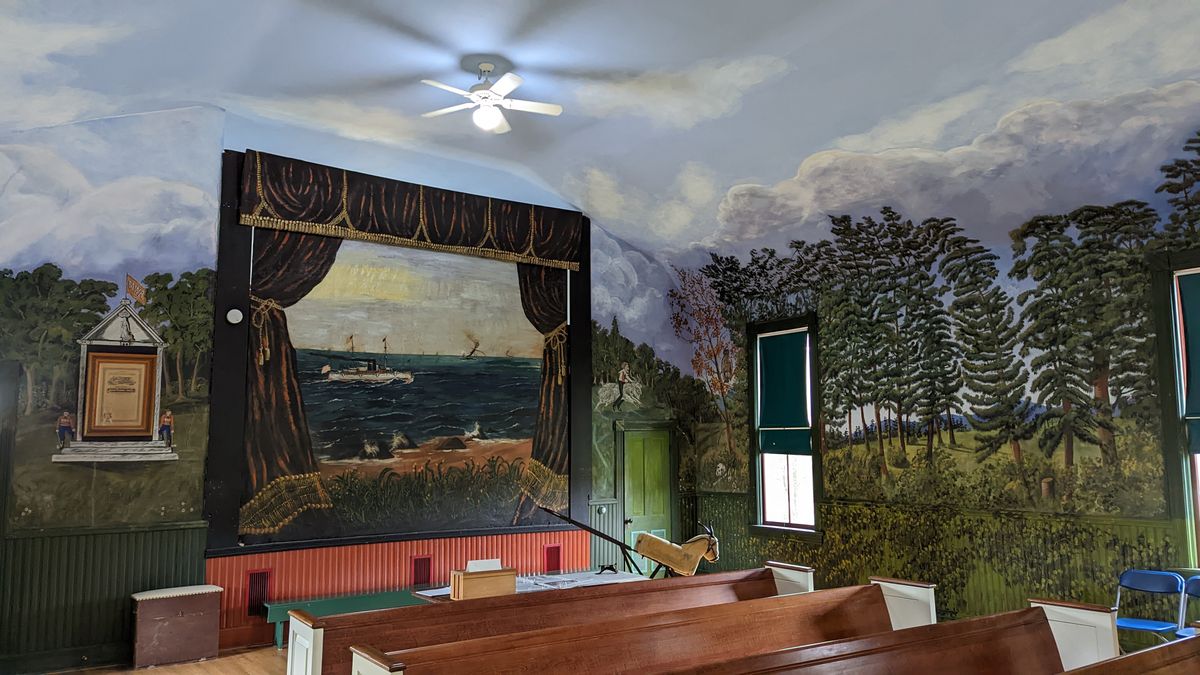About
A small white house on an idyllic hillside hides an interior filled floor to ceiling with imaginative murals depicting masked men, skeletons, and secret rituals.
Valton was settled before the Civil War. A mill built in 1857 facilitated its growth during last half of the 19th century, but World War I and the Great Depression caused the population to quickly decline. Nowadays the community has two claims to fame: one of the oldest Quaker churches in Wisconsin and The Painted Forest.
Ernst Hüpeden arrived in New York on a ship called the Herder in 1878. From there he walked west, exchanging painting for room and board on his way.
Hüpeden reached Valton in the spring of 1897. A local unit of the Modern Woodmen of America commissioned him to paint a stage curtain in exchange for room and board at a nearby hotel. His work impressed the charter members and he was asked to paint their meeting house. Hüpeden spent the next two years painting, literally covering every inch of the lodge―the arched ceiling, the window frames, and the curtains―with murals depicting the MWA’s rites, ideals, and activities.
Hüpeden finished in November 1899 and left on foot. He continued west, walking and painting until he died on December 8, 1911. He’s buried in a pauper’s grave just outside Richland Center, Wisconsin.
It’s commonly thought that Ernst Hüpeden was self-taught, but that’s probably not true. German schools started fostering artistic talent early enough to have had a positive effect on his work, most of which is lost to time. The Painted Forest remains preserved by the efforts of Edgewood College.
Related Tags
Published
July 18, 2017


































